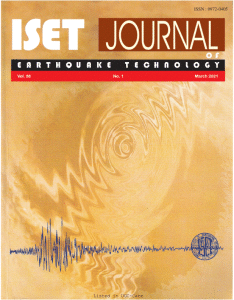Home > Issues & Journals
COMPARISON OF IN-SITU AND LABORATORY TEST-BASED SOIL LIQUEFACTION AND CYCLIC SOFTENING RESPONSES
Armin W. Stuedlein & Amalesh Jana
Paper No.: 590
|
Vol.: 62
|
No.: 1
|
March, 2025
|
pp. 1-17

Abstract
This paper describes a series of dynamic, in-situ tests conducted within natural soil deposits to deduce their seismic and post-seismic responses and presents side-by-side comparison to the results of cyclic and post-cyclic laboratory test programs and/or laboratory test-based models to establish the similarities and differences between the two techniques. The deposits investigated included a low plasticity silt deposit at mean depth of 2.5 m, a moderate plasticity silt deposit at a depth of approximately 10 m, and a medium dense sand deposit at a depth of about 25 m. Two methods for applying seismic loading in-situ were deployed: vibroseis shaking and controlled blasting. The in-situ seismic responses considered include the variation of maximum and residual excess pore pressure with shear strain and cyclic resistance. Post shaking volumetric strain responses are compared to general and site-specific post-cyclic volumetric strain models for the medium dense sand and medium to high plasticity silt deposits, respectively. The post-shaking monotonic undrained shear strength of the medium to high plasticity silt deposit is compared to a site-specific post-cyclic strength model. Key issues surrounding the differences between laboratory and in-situtesting are identified and highlight relevant factors contributing to observed similarities and differences in
the observations; these issues include the use of reconstituted specimens and the effects of multidirectional
shaking, partial drainage, and excess pore pressure redistribution, all of which are difficult to simulate in
the laboratory.
Keywords: Soil Dynamics, Liquefaction, Cyclic Softening, In-Situ Testing
©2025. ISET. All Rights Reserved.